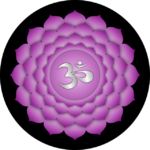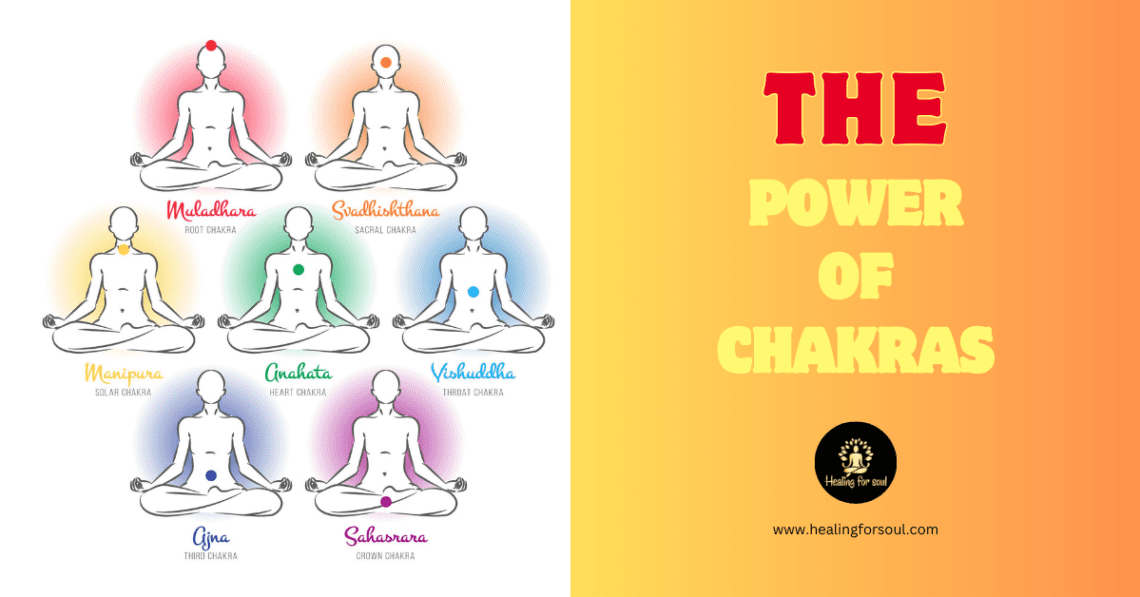The concept of chakras, that find their source in the ancient Indian traditions, are now more and more popular among the practitioners of modern wellness. They are supposed to be the energy centers inside our bodies which affect our mental, emotional and spiritual well-being. We can get an improved harmony and vitality in our lives by making sure we understand them and then balance them.
Introduction to Chakras
The word “chakra” is of Sanskrit origin and it means “wheel” or “disk” which implied the circulation of energy in form of centers with such kind of radiance. There are seven main chakras, each situated on the spine from the top to the bottom of the body. Which reflect different physical, emotional, and spiritual aspects of our being. If energy at these power points is in harmony then there will be unimpeded flow so that health as well as general wellbeing will be promoted. However, when they get blocked, a problem with energy flow appears and results in poor health state an disbalance.
Understanding the Seven Main Chakras
The Root (Muladhara)

Root chakra which is found at the base of the spine, is correlated with the color red and the element earth. It is in-charge of our security, stability and basic survival needs. Being in harmony with your Root your foundation will be solid and you will feel grounded.
The Sacral Chakra (Svadhisthana)

Situated just under the navel, the Sacral is correlated to the orange in color and water as an element. It affects our creativity, sexuality, and emotional expression. It permits us to let ourselves be pleasured by the beauties of life and to preserve healthy relations.
The Solar Plexus Chakra (Manipura)

Situated above the navel, the Solar Plexus is connected with the color yellow and element of fire. It is responsible for our personal power, self-esteem and confidence. If this is balanced, we will feel like we can do everything and no one has right to interfere in our lives.
The Heart Chakra (Anahata)

Let me give you a brief overview of Anahata. Its location is at the center of your chest, its color is green and its element is air. It bridges the gap between the lower (physical) and upper (spiritual) worlds affecting love in all forms, compassion, and emotional balance. An open Heart Anahata makes it possible for us to love and to be loved without any hindrance.
The Throat Chakra (Vishuddha)

Positioned at the throat, the Vishuddha represents the blue color and ether element. It is in-charge of our communication, self expression and truth. With a balanced Vishuddha we are empowered to tell what we know to be true and express ourselves clearly.
The Third Eye Chakra (Ajna)

Situated middle of the two eyebrows, the Third Eye Ajna is implicated in the indigo color and light element. It affects our intuitive, insightful, and inner-wise behavior. A harmonious Third Eye Chakra develops our capacity to perceive not only with the eyes but also to reach more profound conscious levels.
The Crown Chakra (Sahasrara)

The Crown Sahasrara positioned at the top of one’s head corresponds to the color violet or white and the element of thought. It is responsible for our connection with the divine, spiritual consciousness, and enlightenment. A harmonized Crown Chakra makes it possible for us to feel unity and higher consciousness.
READ ABOUT 7 CHAKRAS IN MORE DETAIL
Chakra Balancing Techniques
Meditation
In chakras, balance is a great weapon. We can promote energy circulation and unblockage by concentrating on each, picturing its color, and then letting it in. There are many guided meditations that focus on balancing them which you can easily get and they are also very effective.
Yoga
Certain yoga postures are able to awaken and balance them. An example is the Tree Pose (Vrksasana) which is superb in grounding and balancing the Root Chakra while the Fish Pose (Matsyasana) opens the Heart Chakra. A regular yoga practice that includes these poses will help you to take care of the overall chakra’s health system.
Crystals
For centuries crystals are sought for the healing and harmonizing by many cultures. There are certain crystals associated with each chakra, e.g. red jasper for the Root and amethyst for the Crown. It is believed that if these crystals are placed on the chakras during meditation or you carry them throughout the day their energy can be enhanced.
Essential Oils
Aromatherapy based on essential oils can help as well in balancing Them. For example, sandalwood oil can be used to support the Root and lavender oil is good for the Crown . These oils you can use in a diffuser, add to a bath, or apply on your skin.
Sound Healing
The sound vibrations affect our energy centers in a deep way. Closely related to the alignment and balancing of the chakras are the singing bowls, tuning forks and chanting. Each chakra vibrates at a certain frequency, and by using those sound instruments it is possible to bring back consonance into your body system.
The Benefits of Balanced Chakras
Physical Health
The wellness of the body as a whole is directly proportional to the balance of chakras. Organs and body functions are what each chakra relates to. For instance, a grounded Root Chakra is good for the overall health of the legs, feet, and lower back while an open Heart Chakra will support the heart health system.
Emotional Stability
Emotional stability is enhanced when our chakras are in a balanced state. We become more capable to handle the stress, anxiety and depression. A Sacral Chakra which is balanced for example, helps us to express our emotions healthily and keep positive relationships maintained.
Mental Clarity
Balanced chakras can improve mental clarity and focus. The Eye Chakra of the third order especially has intuition and insight as their characteristic. If this chakra is balanced it helps us to have a clearer perception of things and to get deeper into the understanding.
Spiritual Growth
Chakras well maintained, helps in the growth and development of spirituality. The Crown Chakra, on the other hand, connects one with their higher self and the divine source. When this chakra is in balance one can have deep spiritual enlightenment and a feeling of harmony with the universe.
Chakras in Modern Wellness Practices
Reiki Healing
Reiki is one of the energy healing practices that originally came from Japan. It implicates the transfer of universal life force energy through the practitioner’s hands to the patient. Reiki can help to align charkas and support overall healing. Practitioners often concentrate on removing blockages and rejuvenating energy flow within chakras.
Acupuncture
Acupuncture, an integral part of the Traditional Chinese Medicine (TCM) uses thin needles which are inserted at specific points in the body for the purpose of harmonizing energy flow. Though TCM does not recognize chakras, it uses meridians but the goal of both systems is to harmonize the energy in the body so as to promote health and well-being. Some practitioners do combine cakra concepts with their acupuncture therapy.
Energy Healing Modalities
In addition to Reiki and acupuncture other energy healing modalities like Pranic Healing, Quantum Touch, and Healing Touch also give emphasis to chakra balancing. It comprises manipulation of the body’s energized radiance to remove blockages hindering free flow of energy and re-establish harmony.
Practical Tips for Maintaining Chakra Balance
Daily Meditation
Losing a few pounds can keep your blood sugars balanced throughout the day. Even if you take only five minutes of deep concentrated breathing it can make a significant difference. Find a calm place where you will be able to relax and feel yourself inside.
Regular Exercise
In order to maintain chakras in balance, physical activity is indispensable. Dance-like activities yin yoga, tai chi, and qigong are very good as they integrate motion with breath and energy flow. Find a form of exercise that you enjoy and make it a regular part of your routine.
Healthy Diet
To take care of your chakras it is important to eat a well balanced diet which includes a good variety of fruits, vegetables, whole grains and lean proteins. Each chakra has its own set of foods. An example of this is the fact that red fruits and vegetables are good for the Root Chakra, while green leafy vegetables support the Heart Chakra.
Mindfulness Practices
These mindfulness techniques like journaling, gratitude practice as well as mindful breathing are enough to keep your chakras balanced. Such practices force us to be in the now and to be with our internal selves which in turn promotes wellness overall.
Chakras and Personal Development
Self-Awareness
Chakras comprehension can help in the development of self-awareness. Through identifying which chakras are in disharmony we can get a clue into the root of issues affecting our physical, emotional and spiritual health. Such awareness gives us the opportunity to be proactive in our approach for healing and growth.
Personal Empowerment
A well-tuned chakra system can give us the tools to feel self-empowered which eventually lets us take over our lives. An example of this is when our Solar Plexus Chakra is in harmony we get a feeling of self-assurance and adequacy that helps us accomplish our goals. Consequently, success and fulfillment may be experienced thanks to such inner empowerment.
Emotional Healing
Chakras which are the focal points of energies within our bodies when worked on can help in deep emotional healing. Through imbalances of the Sacral Chakra we can let go past traumas and grow healthier emotional ways. This healing journey may result in a higher degree of emotional robustness and well-being.
Spiritual Connection
Chakras’ balancing can lead to a more profound spiritual connection. Once our Crown Chakra is open and balance is maintained, we feel the oneness of the divine and can reach higher states of consciousness. This bond on a spiritual level may provide tranquility as well as direction in ones life.
Chakras in Different Cultures
Hindu Tradition
Origin of chakras from the Hindu culture, as depicted by the ancient literature such as the Vedas and Upanishads leads us to the source of this concept. In Hinduism, chakras are said to be crucial for development in the spiritual ways and finally enlightenment. Various forms like yoga and meditation, they do rope-walking on by balancing/changing their chakras systematically to promote spiritual growth.
Buddhist Tradition
In Buddhism chakras are recognized as energy centers parallel to the body. Buddhist teachings often are on the mental development and inner peace cultivation. Such things as mindfulness meditation and chanting help to harmonize the chakras and reach an enlightened state.
Western Adaptations
The last years saw a new trend chakras, which are widely-accepted in the western healing methods. Many people do chakra balancing exercises as part of their daily routine to help with mental, emotional and spiritual well-being. The incorporation of chakras into Western practices signifies the expansion of the understanding of the importance of holistic approach to health system
Chakras and Modern Science
Energy Medicine
The sphere of energy medicine is the one to help you understand how the energy of our body affects its well-being and process of treatment. Although scientific research on chakras has not advanced much so far, there is an increasing amount of information that may serve as indirect proof to their existence—biofields, i.e. energy fields surrounding, and penetrating, the human body. Therapies such as acupuncture and Reiki, it has been observed that their efficacy in promoting health and overall well-being is very high and promising.
Psychology and Chakras
Some psychologists and therapists apply the concepts of chakra in their treatment to take care of emotional and psychological issues. With the knowledge of the bond between chakras and emotional states, therapists can be able to assist clients recognize and imbalances in a more effective way. Such an approach, which is holistic, may improve the effectiveness of traditional psychological treatments system.
Chakra Healing Practices Around the World
Ayurveda
A major priority of Ayurveda as the traditional medicine system of India is chakra balancing. Practitioners of Ayurvedic medicines apply diet, herbs, yoga and meditation to ensure the health of chakras. The holistic approach to this combines yin and yang energy to achieve a yin-yang balance which in turn promotes body’s energy and also support general well-being.
Traditional Chinese Medicine (TCM)
TCM may not address chakras but instead meridians however both of them tries to achieve this objective. Methods used by TCM practitioners for the promotion of energy and health are acupuncture, herbal medicine, and qigong. Some practitioners incorporate chakra concepts into their practice as a way of boosting healing ways.
Native American Healing
In healing practices of the Native Americans, it is often highlighted the significance of energy balance. Methods like smudging, drumming and sweat lodges are employed to disperse old energies and to reintroduce harmony. These practices which are the same with chakra balancing techniques and show a holistic way to health system.
Frequently Asked Questions
What are chakras?
Chakras are energy centers within the body that influence our physical, emotional, and spiritual well-being. There are seven main chakras, each located along the spine and associated with specific aspects of our being.
How can I balance my chakras?
There are various techniques for balancing the chakras, including meditation, yoga, crystals, essential oils, and sound healing. Incorporating these practices into your daily routine can help to maintain chakra balance.
What are the benefits of balanced chakras?
Balanced chakras contribute to overall physical health, emotional stability, mental clarity, and spiritual growth. When our chakras are balanced, energy flows freely, promoting harmony and vitality in our lives.
Can chakras affect my physical health?
Yes, each chakra corresponds to specific organs and bodily functions. Imbalances in the chakras can manifest as physical health issues. Balancing the chakras can support overall physical well-being.
How do chakras influence emotions?
Chakras are closely linked to our emotions. For example, the Sacral Chakra influences our emotional expression and relationships, while the Heart Chakra governs love and compassion. Balanced chakras contribute to emotional stability and well-being.
Is there scientific evidence to support the existence of chakras?
While scientific research on chakras is still in its early stages, there is growing evidence to support the existence of biofields—energy fields that surround and permeate the body. Techniques such as acupuncture and Reiki, which focus on balancing these energy fields, have shown promising results in promoting health and well-being.
Conclusion
Understanding and balancing the chakras can profoundly impact our physical, emotional, and spiritual health. By incorporating chakra balancing techniques into our daily routines, we can promote greater harmony and vitality in our lives. Whether through meditation, yoga, crystals, or sound healing, the journey to balanced chakras is a path to overall well-being and enlightenment.






